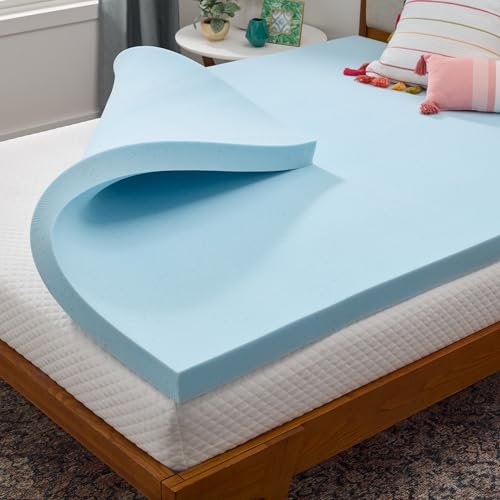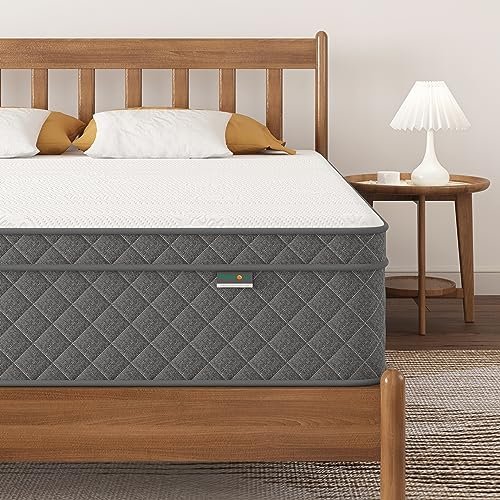
Metal vs. Wood Bed Frame: Which Is Better for Your Sleep Sanctuary?
Searching for the perfect bed frame can feel like a quest, with countless styles, sizes, and materials to choose from. But perhaps the most fundamental decision you’ll face is between a metal bed frame and a wood bed frame. Both offer unique aesthetics and practical benefits, making the choice less about “better” and more about “better for you.”
Don’t worry, we’re here to help you navigate this common dilemma with a friendly, comprehensive guide. By the end of this article, you’ll be equipped with all the insights you need to make an informed decision and create the bedroom of your dreams!
The Great Debate: Metal vs. Wood Bed Frames
Let’s dive into the core differences and advantages of each material. Understanding these will be key to aligning your bed frame choice with your personal needs and style.
Metal Bed Frames: The Sleek & Sturdy Option
Metal bed frames often conjure images of industrial chic, minimalist design, or even ornate vintage elegance. They’re typically made from steel or iron, offering a distinct set of characteristics.
Pros of Metal Bed Frames:
- Durability & Strength: Metal is incredibly robust. A well-constructed metal frame can last for many, many years, resisting bends and breaks under normal use. They often offer excellent support for heavier mattresses.
- Modern & Minimalist Aesthetic: For contemporary or industrial decor, metal frames are a perfect fit. Their clean lines and often slender profiles can make a room feel more spacious and open.
- Affordability: Generally speaking, metal frames can be more budget-friendly than their wooden counterparts, especially for basic designs.
- Low Maintenance: Metal frames require very little upkeep. A quick wipe-down is usually all that’s needed to keep them looking good. They are also resistant to pests like termites.
- Variety in Design: While often seen as modern, metal can also be forged into intricate patterns, creating classic, antique, or even whimsical looks.
- Space-Saving Potential: Some metal frames have thinner profiles, taking up less visual and physical space in a room.
Cons of Metal Bed Frames:
- Potential for Noise: This is a big one for many. Metal joints can sometimes creak or squeak with movement, especially if they loosen over time. While some modern designs mitigate this, it’s a common concern.
- Less Warmth in Aesthetics: Metal, by its nature, can feel a bit cold or sterile in a room, especially compared to the natural warmth of wood.
- Limited Customization (for DIYers): Unlike wood, it’s much harder to paint, stain, or modify a metal frame yourself if you decide to change your decor later.
- Weight (for some designs): While some are lightweight, others, particularly those made from heavy-gauge steel or iron, can be quite heavy and difficult to move.
Wood Bed Frames: The Classic & Cozy Choice
Wood bed frames are timeless. From rustic farmhouse to sleek Scandinavian, solid wood or engineered wood frames offer warmth, texture, and a sense of natural beauty.
Pros of Wood Bed Frames:
- Warmth & Aesthetic Versatility: Wood brings a natural, inviting warmth to any bedroom. It’s incredibly versatile, fitting seamlessly into almost any decor style – traditional, modern, bohemian, rustic, or minimalist – depending on the wood type and finish.
- Sturdiness & Stability: High-quality wood frames are exceptionally sturdy and less prone to creaking compared to metal, as wood naturally absorbs vibrations better.
- Durability (when well-maintained): Solid wood, properly cared for, can last for generations. It’s a material that often ages beautifully.
- Customization Potential: If you’re handy, wood can be painted, stained, distressed, or even carved to match your evolving tastes.
- Less Noise: Generally, wood frames are quieter as the material naturally dampens sound and the joints often fit more snugly without metal-on-metal friction.
- Eco-Friendly Options: Sustainably sourced wood is a renewable resource, making it an attractive option for environmentally conscious buyers.
Cons of Wood Bed Frames:
- Higher Cost: Quality solid wood frames are often more expensive than comparable metal frames. Engineered wood options can be more affordable but may not offer the same longevity.
- Maintenance & Vulnerability: Wood can be susceptible to scratches, dents, warping from humidity changes, or even pests like termites (though this is rare for treated indoor furniture). It may require occasional polishing or conditioning.
- Weight & Mobility: Wood frames, especially solid ones, tend to be heavier than metal frames, making them more challenging to move during cleaning or relocation.
- Bulkier Profile: Depending on the design, wood frames can sometimes appear bulkier and take up more visual space than their metal counterparts.
Making Your Decision: A Step-by-Step Guide
Now that you understand the fundamental differences, let’s walk through how to apply this knowledge to your specific situation.
Step 1: Define Your Priorities
Before you even start browsing, sit down and think about what truly matters to you in a bed frame.
- Budget: What’s your absolute maximum spending limit? Be realistic.
- Style & Aesthetic: What look are you going for in your bedroom? Modern, traditional, rustic, minimalist, eclectic? Do you prefer warmth or sleekness?
- Durability & Longevity: How long do you expect this frame to last? Are you looking for something that will withstand frequent moves or everyday wear and tear from kids and pets?
- Noise Tolerance: Are you a light sleeper? Does the thought of a creaking bed frame bother you? If so, prioritize quiet materials and construction.
- Weight & Mobility: How often do you plan to move your bed or your home? Do you prefer a frame that’s easy to shift for cleaning?
Step 2: Consider Your Lifestyle
Your daily life and household dynamics play a huge role in the best bed frame choice.
- Kids and Pets: If you have active children or pets who might jump on the bed, you’ll need something exceptionally sturdy and resistant to scratches or dings. Metal can be very durable, but wood can hide minor imperfections better with the right finish.
- Moving Often? If you anticipate frequent moves, consider a frame that is easier to disassemble, transport, and reassemble without losing structural integrity. Lighter metal frames often excel here.
- Allergies: While both materials are generally fine, some people prefer wood for its natural properties and ease of cleaning, which can help reduce dust buildup.
Step 3: Evaluate Your Space
Your bedroom itself will help guide your decision.
- Room Size: In smaller rooms, a slimmer metal frame can make the space feel less cluttered. In larger rooms, a grander wooden frame can serve as a beautiful focal point.
- Existing Decor: Does your current furniture (dressers, nightstands) lean more towards warm wood tones or cool metal accents? Choose a frame that complements, rather than clashes with, your existing pieces.
- Natural Light: Rooms with abundant natural light can handle the “coolness” of metal well, while darker rooms might benefit from the natural warmth of wood.
Step 4: Think Long-Term
A bed frame is an investment, so consider its future.
- Longevity: Are you hoping for a frame that will last 5 years, 10 years, or a lifetime? High-quality versions of both wood and metal can offer exceptional longevity.
- Adaptability: How likely are you to redecorate in the future? Wood offers more versatility for DIY aesthetic changes (paint, stain), while metal designs are often more fixed.
Step 5: Trust Your Gut (and Your Eyes!)
Ultimately, this is your personal sleep sanctuary. After considering all the practicalities, go with what visually appeals to you most and feels right. You’ll be looking at it every day, so your personal preference is incredibly important.
Tips for Choosing the Perfect Frame (Regardless of Material)
Beyond the metal vs. wood debate, here are some universal tips for making a smart purchase:
- Check the Slats/Support System: This is crucial for your mattress’s longevity and your comfort. Look for strong, closely spaced slats (especially for foam mattresses) or a robust platform. Inferior support can lead to mattress sagging.
- Consider Assembly: Some frames are notoriously difficult to put together. Read reviews (general ones, not product-specific) or inquire about assembly complexity if you’re not handy or plan to DIY.
- Measure, Measure, Measure: Measure your mattress, your bedroom, and even your doorways/stairwells if you’re getting a bulky frame. There’s nothing worse than a bed that doesn’t fit!
- Evaluate Construction Quality: Regardless of material, look for solid construction. Tight joints, sturdy hardware, and a lack of wobble are key indicators of a well-made frame.
- Understand Weight Capacity: Especially if you have a heavier mattress (like a latex or memory foam) or if multiple people (or pets!) will be on the bed, ensure the frame has a suitable weight capacity.
Common Mistakes to Avoid
Even with all this information, it’s easy to fall into some common traps.
- Ignoring the Support System: Don’t just focus on aesthetics. A beautiful frame with inadequate support will compromise your mattress and your sleep. Always prioritize robust support.
- Sacrificing Quality for Price: While it’s great to save money, opting for the cheapest frame often means compromising on materials and construction, leading to a creaky, wobbly, or short-lived bed. Invest in quality; your sleep depends on it.
- Forgetting About Noise: If a silent night is important to you, don’t underestimate the potential for noise from metal frames with loose joints or low-quality hardware.
- Not Measuring Your Space (or Mattress): This is a cardinal sin! A frame that’s too big for your room or doesn’t properly fit your mattress is a headache waiting to happen. Measure everything twice.
- Impulse Buying: A bed frame is a significant purchase that affects your daily comfort. Take your time, do your research, and don’t rush into a decision based solely on looks or a quick sale.
Conclusion: Your Best Bed Frame Awaits!
Choosing between a metal and wood bed frame isn’t about one being inherently “better” than the other. It’s about finding the perfect match for your personal style, practical needs, and lifestyle.
By carefully considering your budget, aesthetic preferences, durability requirements, and the unique characteristics of each material, you’re now well-equipped to make an informed decision. Whether you lean towards the sleek lines and robustness of metal or the timeless warmth and sturdiness of wood, your ideal sleep sanctuary is within reach.
Happy bed hunting!
Frequently Asked Questions(FAQ)
Q. Which is generally more durable, a metal or wood bed frame?
A. Metal frames often boast superior long-term durability and resistance to wear and tear, especially against scratches and dents, and are less susceptible to issues like wood rot or termites. However, well-constructed solid wood frames made from hardwoods can also last for many decades.
Q. Is a metal or wood bed frame usually more affordable?
A. Entry-level and basic metal frames are typically more budget-friendly than solid wood frames. However, prices can vary widely depending on the quality, design, and brand for both materials, with high-end, intricately designed metal frames costing as much or more than quality wood options.
Q. Which material offers more aesthetic versatility for bedroom decor?
A. Wood frames generally offer greater aesthetic versatility, available in a vast range of finishes, stains, and styles from traditional to modern, rustic farmhouse to sleek minimalist. Metal frames offer sleek, industrial, or ornate looks, but can sometimes feel more limited in their overall design flexibility compared to wood.
Q. Which type of bed frame is easier to maintain?
A. Metal frames are often easier to maintain, usually requiring just a simple wipe-down with a damp cloth to remove dust. Wood frames may require occasional polishing or specific cleaning products depending on their finish, and are more susceptible to water damage or deep scratches that affect the finish.
Q. Which is more prone to squeaking, a metal or wood bed frame?
A. Both can squeak if not assembled properly or if joints loosen over time. However, metal frames, particularly those with many bolted joints or where metal rubs against metal, are often perceived as more prone to developing persistent squeaks than well-constructed, solid wood frames with secure joinery.
Q. Which bed frame is typically heavier and harder to move?
A. Solid wood frames, especially those made from hardwoods like oak or mahogany, are generally heavier than most metal frames. This can make wood frames feel very stable but also more challenging to move or rearrange. Lighter metals like aluminum can make for very portable frames.
Q. Do metal or wood frames offer better support for a mattress?
A. Both can offer excellent mattress support, provided they have adequate slats or a solid foundation. Metal frames often come with a built-in grid or closely spaced metal slats, while wood frames typically use wooden slats. The key is the number, spacing, and strength of the support elements, not the material itself.
Q. Which material is considered more environmentally friendly or sustainable?
A. This depends heavily on the source. Sustainably sourced wood (e.g., FSC-certified) is a renewable resource and can be a very eco-friendly choice. Metal, particularly recycled steel, can also be sustainable due to its high recyclability. However, new metal extraction can be resource-intensive, and the glues/finishes on some wood products can be problematic.
Q. Which frame type is generally easier to assemble?
A. Assembly difficulty varies significantly by design and manufacturer for both materials. Many modern metal frames are designed for quick, often tool-free, assembly. Some wood frames, particularly those with complex joinery or many components, can be more intricate to assemble, though simple wooden platform frames can be very straightforward.
Related Articles
7 Top Full Size Bed Frames: What is the Dimensions of a Full Size Bed Frame and More!
Getting a good night’s sleep often starts with the right bed, and for many, a full-size bed is the perfect sweet spot between a twin and a queen…
How Much Is a King Size Sleep Number Smart Bed
How Much Is a King Size Sleep Number Smart Bed? Your Guide to Understanding the Investment Recommended Product: Select Comfort Air Bed Chamber for Sle…
How Much Does a Sleep Number 360 Smart Bed Cost
How Much Does a Sleep Number 360 Smart Bed Cost? Recommended Product: Sven & Son Classic Adjustable Bed Base — head and foot lift, massage, under-…



